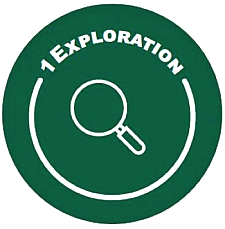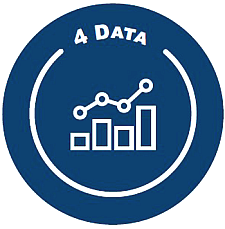We have developed the Growing and Strengthening SNAP E&T Programs series to provide practical resources for state agencies designing and implementing their Supplemental Nutrition Assistance Program (SNAP) Employment and Training (E&T) programs.
The Food and Nutrition Act of 2008, as amended, requires that every state operate a SNAP E&T program, which is defined as case management and one or more components. However, there is much more to operating an effective SNAP E&T program. The series overview gives a roadmap for state agencies as you consider growing and strengthening your SNAP E&T programs. You should use these resources as you look for ways to bolster the quality of your SNAP E&T program and improve SNAP participants’ ability to gain and retain employment. The series is made up of four interconnected parts: Exploration, Design, Providers, and Data.
Exploring the Existing State SNAP E&T Program

Each year, it is important for state agencies to assess your current SNAP E&T program to determine if it is meeting your mission and goals. As a part of the exploration phase, you should assess your current E&T program offerings, determine the interests and needs of your target population, and consult with the state workforce board and employers to understand the labor market.
Resources
- Approaches to Understanding the SNAP E&T Target Population (Revised July 2025)
- Consulting with the State Workforce Development Board (October 2023)
Designing a SNAP E&T Program

Designing a SNAP E&T program is not a one-time effort. SNAP E&T programs need to continually be reviewed and assessed based on evolving community factors—including current labor market needs, provider availability, and service quality—and the target population’s interests and needs. When there is not alignment, that may indicate a need to redesign parts of the program. Tools that help you look at your program operations through the lens of a participant, such as the Road to Engagement can help you understand how to approach redesigning the program to meet the needs of participants.
Resources
- Using a Strategy Map to Guide Your SNAP E&T Program (Revised July 2025)
Selecting Providers to Meet Program Needs

The quality of SNAP E&T providers is a major factor in the success of a SNAP E&T program. It is important to find the “right” providers that meet a program’s needs and have the capacity and ability to serve SNAP participants. State agencies should periodically review the mix of providers to ensure they offer a variety of services to diverse populations. Not all providers will be a good match for SNAP E&T or for a SNAP E&T program’s need. Identifying providers that are a good fit takes time, and a clear understanding of a program’s mission and participants’ needs.
Resources
- Selecting Providers to Meet Your Program's Needs (Revised July 2025)
Monitoring Programs and Using Data

Data are essential to assess if your program is meeting its goals and to make decisions about improvements and program changes. Having access to individual-level data in real or near-real time will allow you to know if providers are operating programs as intended and effectively serving participants.
You can also use data to determine if providers are meeting expected outcomes. In addition, effective analysis of data gives you the tools to make immediate program changes and to identify gaps where longer-term program improvements are needed to meet participant and employer needs. Reviewing and analyzing data should be a continuous process and underlies the other parts of the growing and strengthening process.
Resources
- Coming soon

